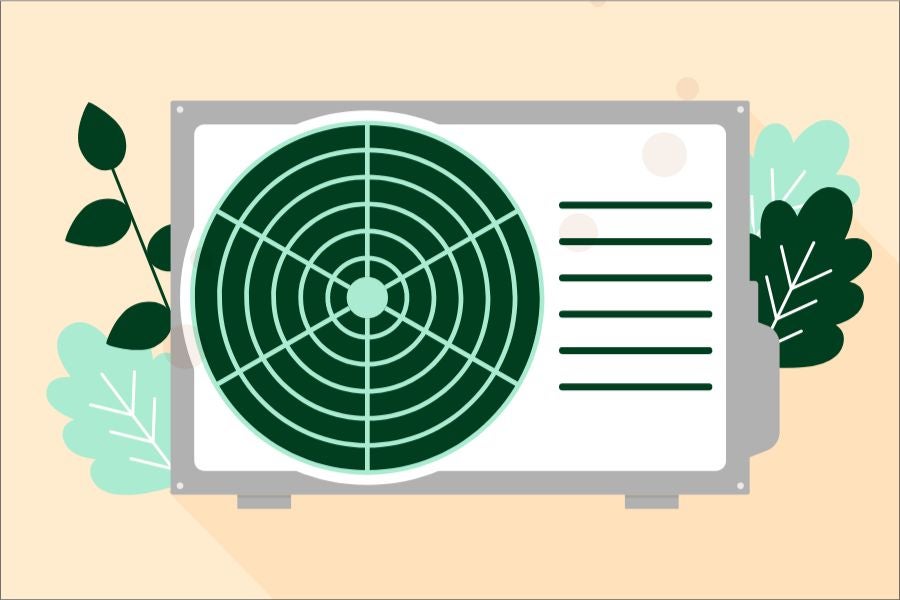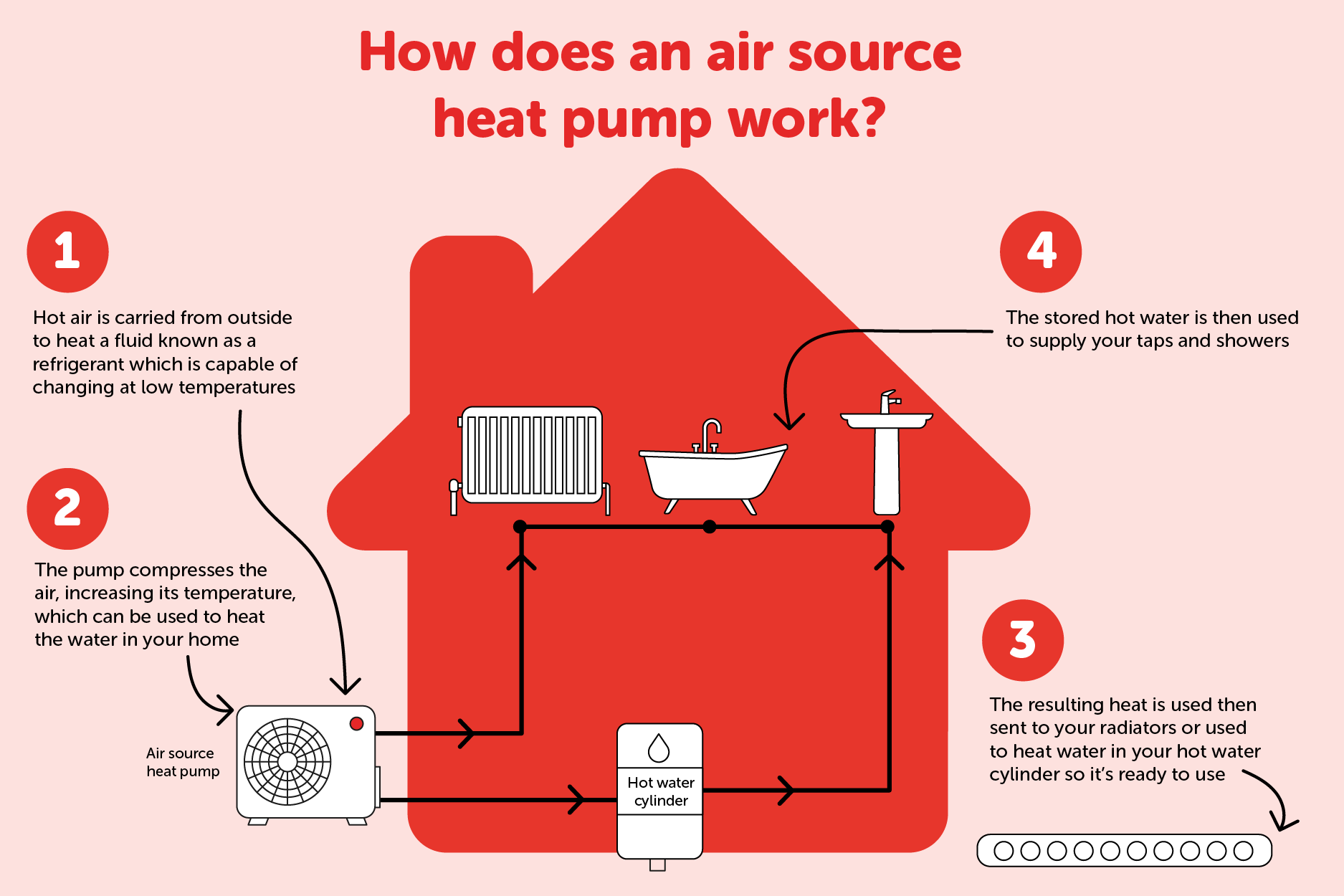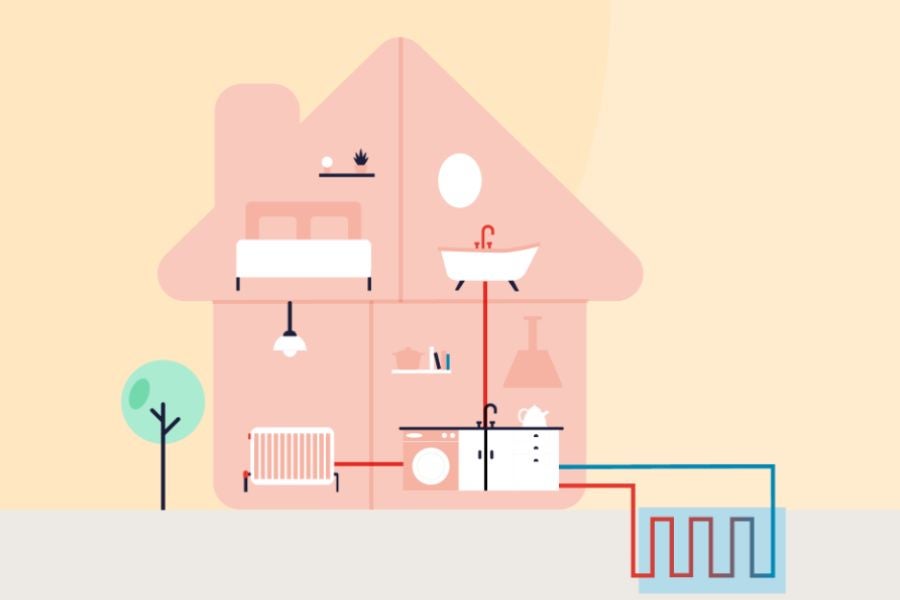Energy saving advice
What is a heat pump and how do they work?
17 Oct 2024 • 8 minutes

Energy saving advice
17 Oct 2024 • 8 minutes
HomeServe Academy Tutor

Heat pumps are rising in popularity as a low-carbon, low temperature heating system alternative—helping people to reduce their carbon footprint.
Whether you're considering a heat pump for the first time or just want to learn more, this guide will provide you with all the key information you need. From what a heat pump is to how a heat pump works, we’ve got you covered.
A heat pump is a device that transfers heat from one place to another, and some heat pumps may even provide both heating and cooling for your home. It can efficiently regulate the temperature inside your home, making it a versatile and energy-efficient solution for managing your home's climate.
There are several different types of heat pumps, but the most common types used in the UK are air source, ground source, and water source heat pumps.
A heat pump works in a similar way to how an air conditioning system works, but instead of taking warm air from inside and venting it out, they take heat energy from the outside to heat your home.
The process of how a heat pump works can be broken down into five clear stages:
A refrigerant is a fluid that absorbs and releases heat as it changes from liquid to gas, this enables heat transfer in systems like heat pumps and air conditioners.
Although there are a few different types of heat pumps, the most common types of heat pumps in the UK are air source heat pumps, ground source heat pumps, and water source heat pumps.

An air source heat pump is a type of heat pump that works by transferring heat from the air to a building. Air source heat pumps can be used to heat your home, but they can also be used to heat water that’s stored in a hot water cylinder, which provides hot water in your home.
Air source heat pumps are compatible with various property types and are the most common type of domestic heat pump used in the UK. Their relatively easy installation—requiring only an outdoor unit—and their ability to function year-round make them a popular, versatile choice for homeowners seeking low-carbon heating systems.

A ground source heat pump is a type of heat pump that extracts heat from the ground and transfers it to provide heating and hot water for a building.
Ground source heat pumps use a network of buried pipes filled with a heat transfer fluid that absorbs heat from the ground and transfers it to the heat pump. As the ground generally maintains a relatively constant temperature throughout the year, ground source heat pumps operate efficiently in all seasons.
Compared to air source heat pumps, ground source heat pumps require a larger area for installation. This is essentially because the pipes need to be laid horizontally in trenches or vertically in boreholes.

A water source heat pump is a type of heat pump that extracts heat from a nearby water source, such as a lake, river, or well, to provide heating and hot water for a building. They can be used for both heating and cooling, depending on the configuration.
This system works by using submerged pipes to absorb heat from the water, which is then transferred to the heat pump. Water source heat pumps are particularly efficient because water bodies tend to have more stable temperatures compared to air, allowing for consistent heat extraction throughout the year.
Installation requires access to a suitable water source, and the pipes must be submerged or installed in a closed-loop system.
Going from the traditional boiler heating system to a heat pump system is a big decision, so it’s important to be aware of the advantages and disadvantages that come with owning a heat pump before making the change.
Some key advantages of a heat pump include:
Some key disadvantages of a heat pump include:
If you still have some burning questions about heat pumps, we’ve compiled a list of some of the most common questions and answers below.
Heat pumps work the same way in winter as they do throughout the other months of the year, by extracting and transferring heat from the outside to the inside of your home.
According to an EnergySage analysis of a Department of Energy database, a typical heat pump in a typical home will use around 5,475 kiloWatt hours (kWh) per year. In most cases, this is likely to be the highest energy user in the home.
However, it’s important to bear in mind that there are lots of different factors that will affect what this figure looks like. This means it’s more useful to look at this as a range of between 400 kWh and 22,500 kWh, according to analysis by EnergySage.
It depends on the heat pump you use. Some heat pumps have the ability to heat but also cool your home by moving heat from inside the house to outside through the reversing valve. These heat pumps are sometimes referred to as split units.
Are you thinking about upgrading your current heating system with an air source heat pump? Make an informed decision by exploring our guide to air source heat pumps. Learn everything you need to know and see if it's the right fit for you!
Paul started his career with a 5 year Plumbing and Heating apprenticeship and became a fully qualified Plumbing and Heating Engineer. He has installed domestic central heating systems for local councils and also installed hot and cold water systems, heating systems and above ground drainage on new build properties.
Paul then moved into the service and repair of gas boilers and systems for larger companies such as npower and The AA before moving to HomeServe.
He continued to work in service and repair for HomeServe before pursuing an opportunity at the HomeServe Training Academy.
In the academy, he is part of the team that delivers training to HomeServe engineers and also to groups of internal and external gas apprentices, and soon to be training a group on Plumbing. The engineer training ranges from Gas ACS, unvented hot water, water regulations, heat pumps and safe electrical isolation.
HomeServe offers a fantastic work environment, and by incorporating air source heat pumps into our products and training, we demonstrate our responsiveness to evolving home heating needs and trends.
29 years in the plumbing and heating industry, 26 years fully qualified.
Paul started his career with a 5 year Plumbing and Heating apprenticeship and became a fully qualified Plumbing and Heating Engineer. He has installed domestic central heating systems for local councils and also installed hot and cold water systems, heating systems and above ground drainage on new build properties.
Paul then moved into the service and repair of gas boilers and systems for larger companies such as npower and The AA before moving to HomeServe.
He continued to work in service and repair for HomeServe before pursuing an opportunity at the HomeServe Training Academy.
In the academy, he is part of the team that delivers training to HomeServe engineers and also to groups of internal and external gas apprentices, and soon to be training a group on Plumbing. The engineer training ranges from Gas ACS, unvented hot water, water regulations, heat pumps and safe electrical isolation.
HomeServe offers a fantastic work environment, and by incorporating air source heat pumps into our products and training, we demonstrate our responsiveness to evolving home heating needs and trends.
29 years in the plumbing and heating industry, 26 years fully qualified.
Our help & advice articles cover Plumbing, Home heating, Electrical, Energy-saving and Home maintenance.